deepeye.hu
Astronomical Drawings of Peter Kiss
Astronomical Drawings of Peter Kiss





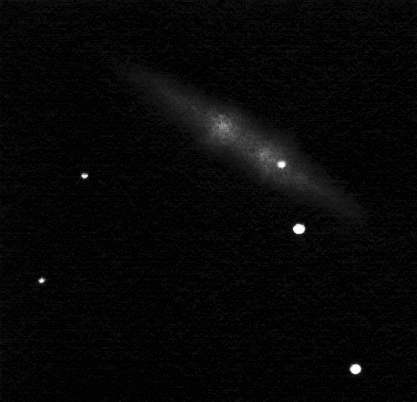
The supernova discovered by Steve Fossey and his students in M 82 on January 21. 2014 pretty much stirred up the community. Moreover it was discovered by chance during an undergraduate training course. As a further extra the supernova SN 2014J was of type Ia.
I couldn't wait to take a look at the new star as it is easily within reach of my small 4" Dobsonian. It reached its maximal brightness at 10.5mg on January 31. 2014. The sky finally cleared on the night of the 3rd of February so I managed to catch this little guest. The galaxy itself shows many details. Several knots and threads are visible in it. The bright knot left of the center is inhomogenious and the other knots are not without details either. The supernova is bright and very easy to see. This is my first supernova drawing.
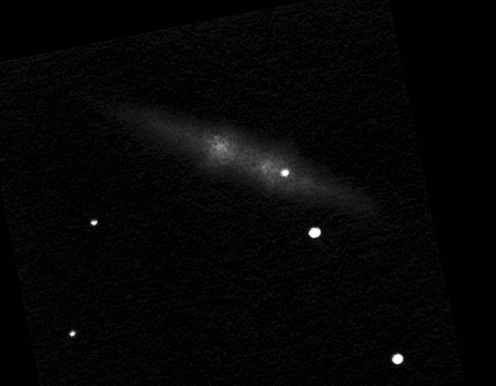
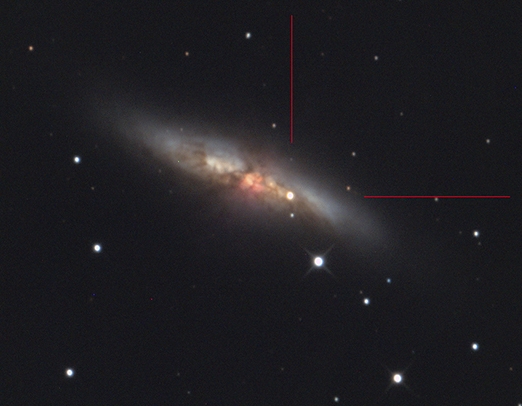
The photo on the left was made by Attila Róbert Horváth and Gábor Szitkay using a 16" astrograph. The original photograph has been cropped and my inverted drawing rotated so that the photo and the drawing show a similar area of the sky.
I could see much less using the small Dobsonian as it is visible in the 16" photo. The red area around the core of the galaxy is obviously missing from the drawing. This can be due to the fact that the human eye is not sensitive to the H-alpha emision that causes the red color. Surprisingly the supernova SN 2014J (marked in the photo) is not blue like many other supernovae. The large amounts of interstellar dust in M 82 are at least partially responsible for this.
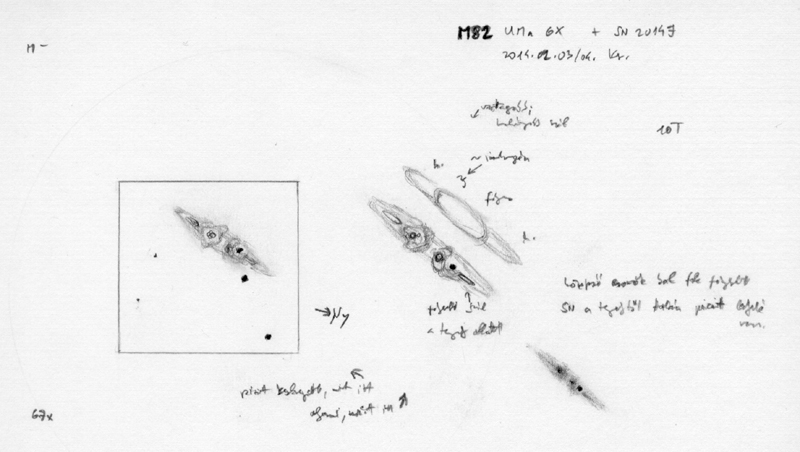
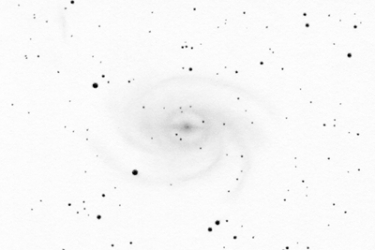
Pavo galaxy
The grand spiral galasy of Pavo
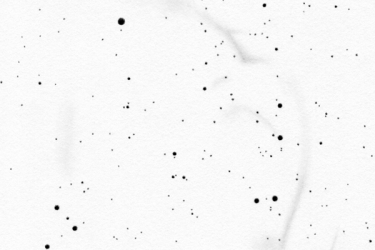
Panorama drawing
Huge and faint supernova remnant in the southern sky
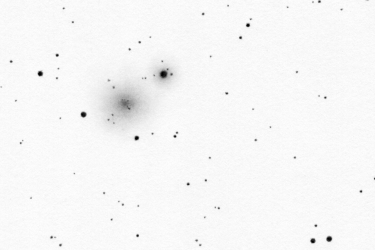
Centaurus globular cluster
The second globular in Centaurus

Apus globular cluster
Globular cluster close to the Southern celestial pole
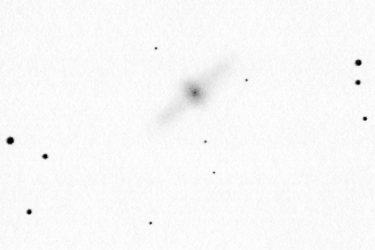
Centaurus galaxy
Polar ring galaxy
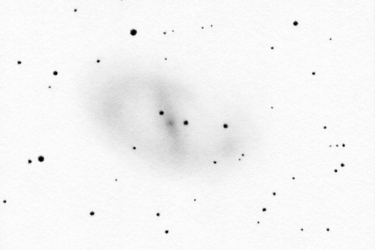
Ara galaxy
Barred spiral galaxy in the thick of the Milky Way